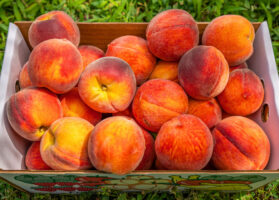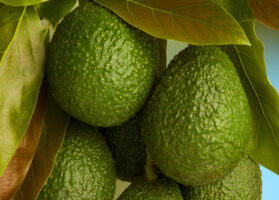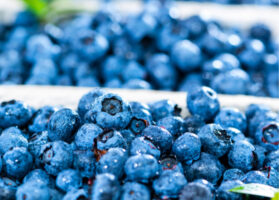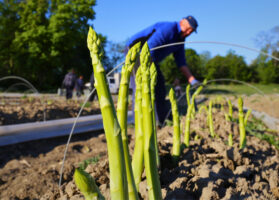Grape, almond, tomato growers fear big losses from Hilary
Overview of grapes in the U.S. market, complemented by charts from Agronometrics. Original published on August 22, 2023.
Local farmers say last weekend’s rain walloped Kern County’s table grape and tomato crops, while almonds appear to have sustained damage that may or may not be manageable.
While it’s still too early to know how extensive the rain damage may be, two local growers called the situation devastating, especially for grape producers.
“We’re trying to mitigate a disaster,” said President Robert Dobrzanski of Wild Flower Vineyards in Mettler.
Table grapes are Kern’s top-grossing crop, accounting for more than $1.8 billion in revenue to local growers in 2021, according to county records. Almonds ranked fourth at almost $1.2 billion, while tomatoes came in 15th at $75 million.
At a time of year the region is unaccustomed to precipitation, Tropical Storm Hilary brought record rain on Sunday, raising risks of nut discoloration or, in the case of grapes, burst skins. At worst, crops face possible fungus and rot.
Kenny Kirschenmann, co-owner of Shafter-based Kirschenmann Bros., which grows table grapes, tomatoes and almonds as far west as Buttonwillow, called the rain damage “a catastrophic thing that we’re all going to deal with here.”
Almonds still on the tree should fare well, but those that have already been shaken loose during recent harvesting work “are already turning into compost,” in part because of warmth that has set in since the rains.
“They’re turning to mush is what they’re doing,” Kirschenmann said. The local tomato crop, meanwhile, is going through the “same thing,” he said.
Grapes appear to have suffered most. Dobrzanski said rain-related damage hit growers from the Grapevine all the way north to Fresno County, “so the whole industry was affected.” He estimated losses at between 30% and 50%.
The hope now, he said, is that weather is breezy and not too hot so that the crop dries out in a way that will minimize harm. He said growers will probably dust their vineyards with a mix of sulfur, copper and drying agents to help kill fungus that could ruin the crop.
Some grapes have already been harvested, and that activity sped up last week in anticipation of Hilary’s arrival. Grapes left on the vine at this point will have to be picked and shipped immediately, Dobrzanski said, adding there’s no hope for exporting them overseas, where prices are highest. The last resort is to sell them for juice, which he noted fetches “pennies on the dollar.”

Source: USDA Market News via Agronometrics.
(Agronometrics users can view this chart with live updates here)
Kirschenmann said the extent to which damage spreads depends on location and timing. Another factor he noted is whether grape growers covered their vines with tarps: Those that did may have avoided moisture, but they also face the chance that the fruit under cover got steamed in the heat that followed the rains.
He said he asked his 87-year-old father how to proceed and was told, “We never saw this.”
“We don’t have a chapter (about this) in our books,” Kirschenmann said. “This is a new one.”
An online post by Bakersfield-based almond grower and processor JSS Almonds noted that almond orchards were hit as far north as Lemoore — but that the heaviest rain fell in Kern.
“Although there were individual orchards that were heavily impacted, most escaped the worst-case scenario, and the crop will be fine in the big picture,” JSS stated. “Overall — we do not expect this to impact the state crop in terms of significant volume.”
The company said the primary effect is expected to be further delays to a harvest that already fell behind schedule during the unusually cold, wet winter. Almonds will need to dry out, whether they’re still on the tree or waiting to be scooped up for processing, JSS wrote, adding, “there will likely be a few individual loads that need artificial drying.”
The company added a hopeful note: “There may be some infrequent cases of mold or mildew, however the next week shows warming temperatures and dry skies, which should dry the nuts out quickly.”
With regard to table grapes, viticulturalist Tian Tian, a farming adviser with the University of California Cooperative Extension in Kern County, said the amount of damage individual growers experience will depend on the varieties they grow, where they are located and how much of their harvest is already complete.
Tian referred to two main types of damage: burst berries and bunch rot. She said some of the damage may be addressed by the use of chemicals such as fungicides that can be applied before or after a rain.
She called the rains a very significant event for which local farmers have little guidance.
“Everybody is stressed about it,” she said.
The News in Charts is a collection of stories from the industry complemented by charts from Agronometrics to help better tell their story.
Access the original article with this (Link)






